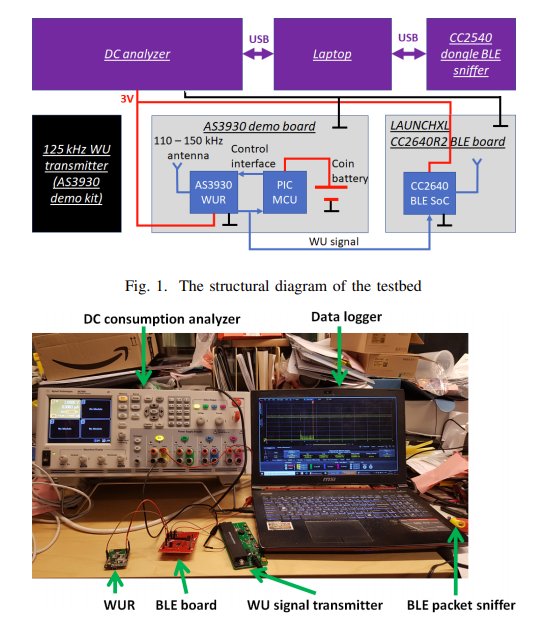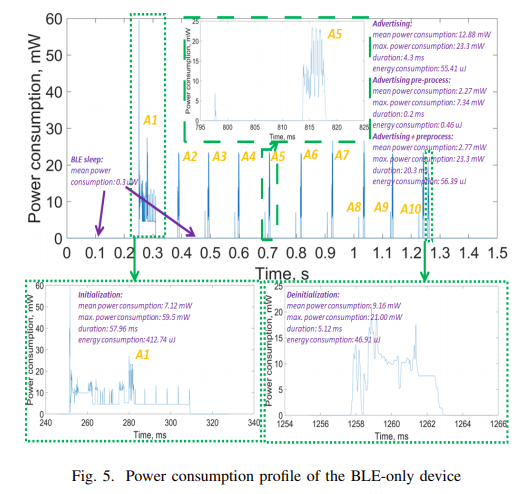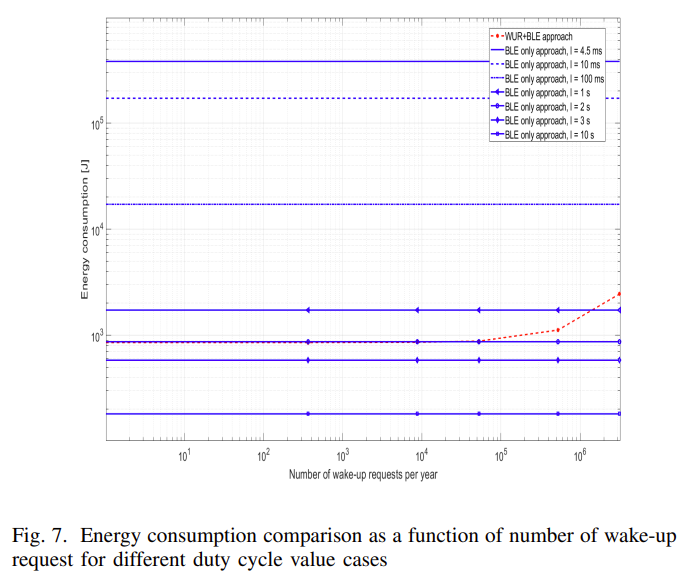There’s interesting new research from University of Oulu, Finland, on Wake-up radio enabled BLE wearables: empirical and analytical evaluation of energy efficiency.
Wake Up Radio (WUR) uses a very low power device that senses a radio signal to switch other devices, in this case a Bluetooth LE transmitter. A AS3930 WUR senses a signal in the range 110-150 kHz and switches a Texas Instruments Bluetooth CC2640R2 LaunchPad board.

The idea is that usually Bluetooth LE advertises every say 100ms to 1000ms and this is wasteful on battery power if the advertising is only needed for short periods of time. The paper assesses the feasibility of using WUR to turn advertising on and off to save battery power. While this is in in the context of wearables, the authors don’t mention much more regarding what might switch the beacons to advertise, other than:
The transmitter of this wake-up signal, which is usually a less restricted device, might be integrated with the communication infrastructure or deployed as an independent system element
The authors later mention healthcare so perhaps wearable beacons might only transmit when needed in particular areas.
It’s also mentioned that WUR can mitigate against the problem of interference when many Bluetooth devices advertise at the same time. This problem is rare and requires a very large number of devices. The authors later mention healthcare but this is unlikely to be a problem. A warehouse with thousands of assets might be a more realistic scenario. In this case, you could envisage wanting a Bluetooth beacon only transmitting when invited to do so.
The paper has some useful charts showing usual Bluetooth power use over time (without WUR):

You can see the periodic advertising which isn’t regular due to the 10ms long pseudo-random delay between advertisements. This is the part of the Bluetooth standard that helps ensure two device that collide usually don’t do so the next time they advertise. In between advertising, the power use a very low 0.3 µW.
The paper shows that energy consumption of the system as a function of the number of wake-ups in a period of time and the maximum application-level latency:

The paper concludes that the WUR approach can be more energy efficient when the desired latency for data delivery is below 2.11s. Even though the consumption of the WUR is low, it unfortunately exceeds the level of a BLE only system sleep mode by almost two orders of magnitude.
In our opinion the researchers are trying to improve on something that is already very low power. In between advertising, power use is extremely low. A CR2477 battery in a Bluetooth wearable can advertise periodically for up to 3 years. Also, for the wearable scenario, it’s more normal to use a low power accelerometer to only have the wearable transmit when moving. This way the battery lasts an extremely long time that’s limited more by the physical lifetime of the battery (5 to 10 years) rather than battery consumption.